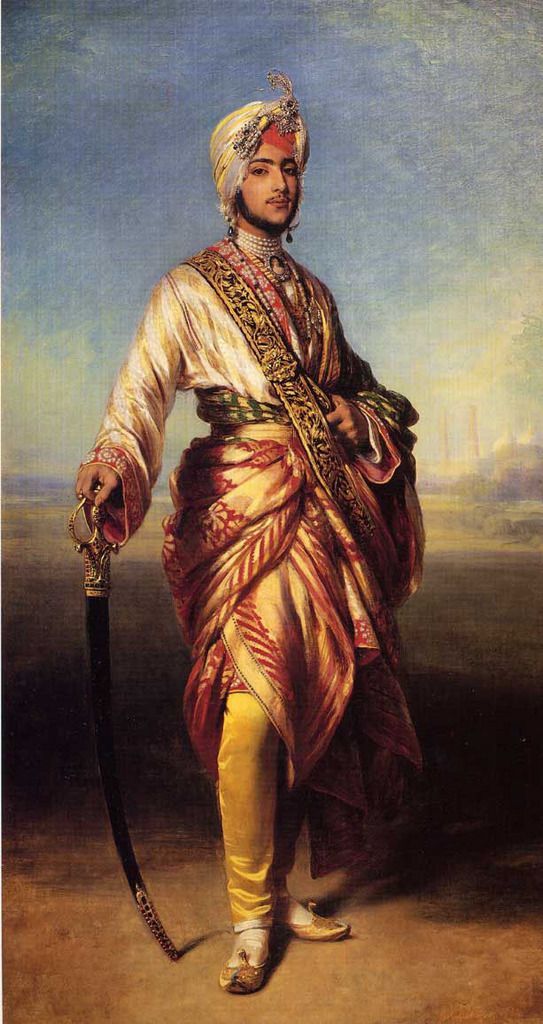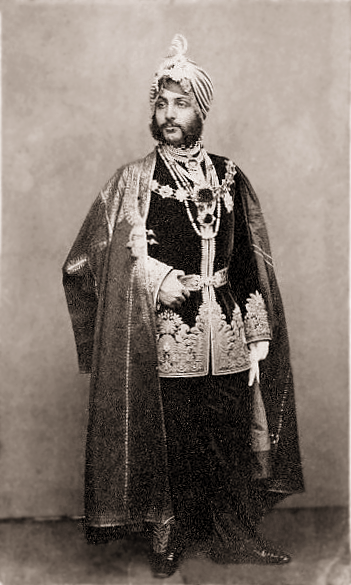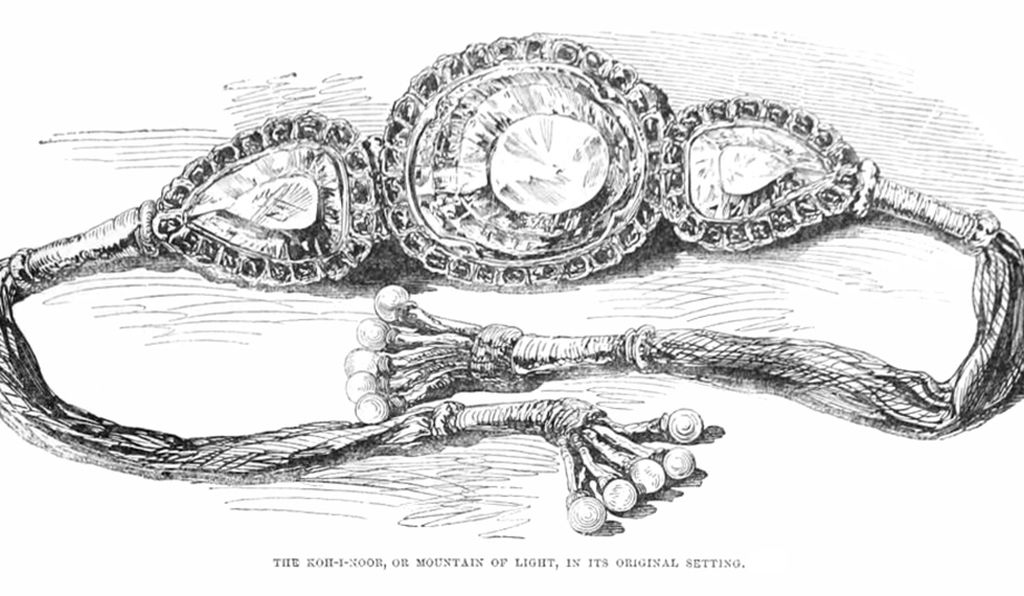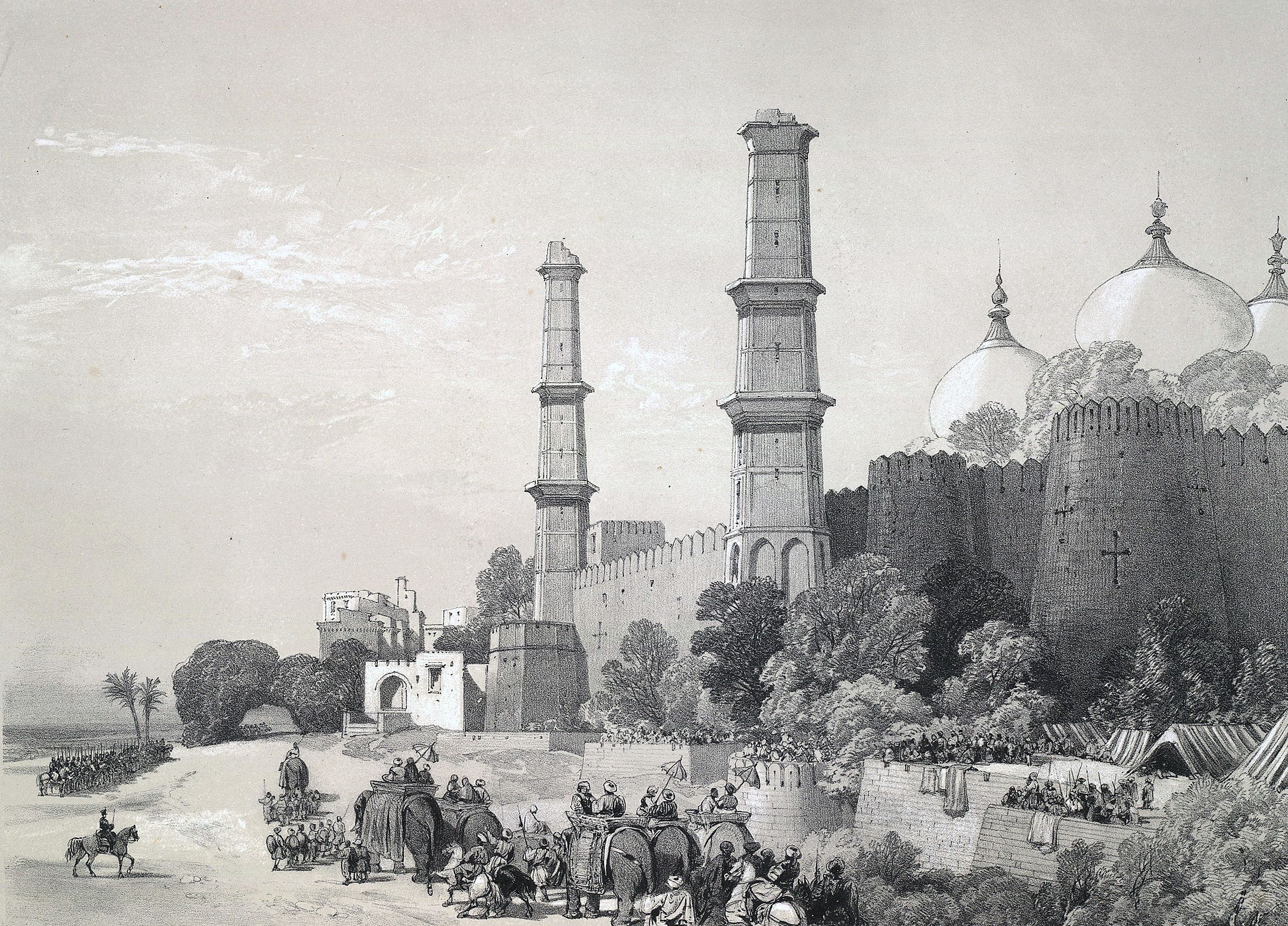Duleep Singh
1838-1893

Duleep Singh in 1854 by Winterhalter (Wikipedia)

Duleep Singh in ceremonial dress, 1861 (Wikipedia)
Duleep was born in Lahore, in the Punjab, India and was the last Maharajah of the Sikh Empire. He came to power, aged 5, in 1843 after the four previous maharajahs were assassinated.
In 1845 Britain was in a year-long war with the Sikhs to annex
Queen Victoria and Albert invited him to Buckingham Palace and he lived at Claridge’s Hotel for a while before the East India Company provided a house in Roehampton on a pension of £40,000 a year.
She described him as “extremely handsome, has a pretty, graceful & dignified manner. He was beautifully dressed & covered with diamonds.”
Duleep visited Osborne in July 1854 where she sketched him with the children and had his portrait painted by Franz Xaver Winterhalter. Victoria wrote “Winterhalter was in ecstasies at the beauty and nobility of bearing of the young Maharaja. He was very amiable and patient, standing so still and giving a sitting of upwards of 2 hrs.”
He toured Europe visiting heads of state and returned to live in Scotland. In 1864 he married Bamba Müller and set up home at Elveden Hall in Suffolk where he lived the life of an aristocrat.
Duleep became disaffected with the British and its role in India. He tried to persuade the Queen to return the Koh-i-Noor diamond but it was already cut down and made into a brooch for Victoria. Duleep returned to India in 1886 where he reverted to Sikhism. He was subsequently involved in a failed plot to reclaim his country from the British so went to live in Paris. The Queen paid him a visit and the two friends were reconciled. After his

The Koh-i-Noor diamond was worn by the Maharajas as an armlet.

Maharaja’s palace in Lahore, captured by British troops after the Anglo- Sikh War. (Wikipedia)
Downhill to next
Uphill to next
Funded by the
